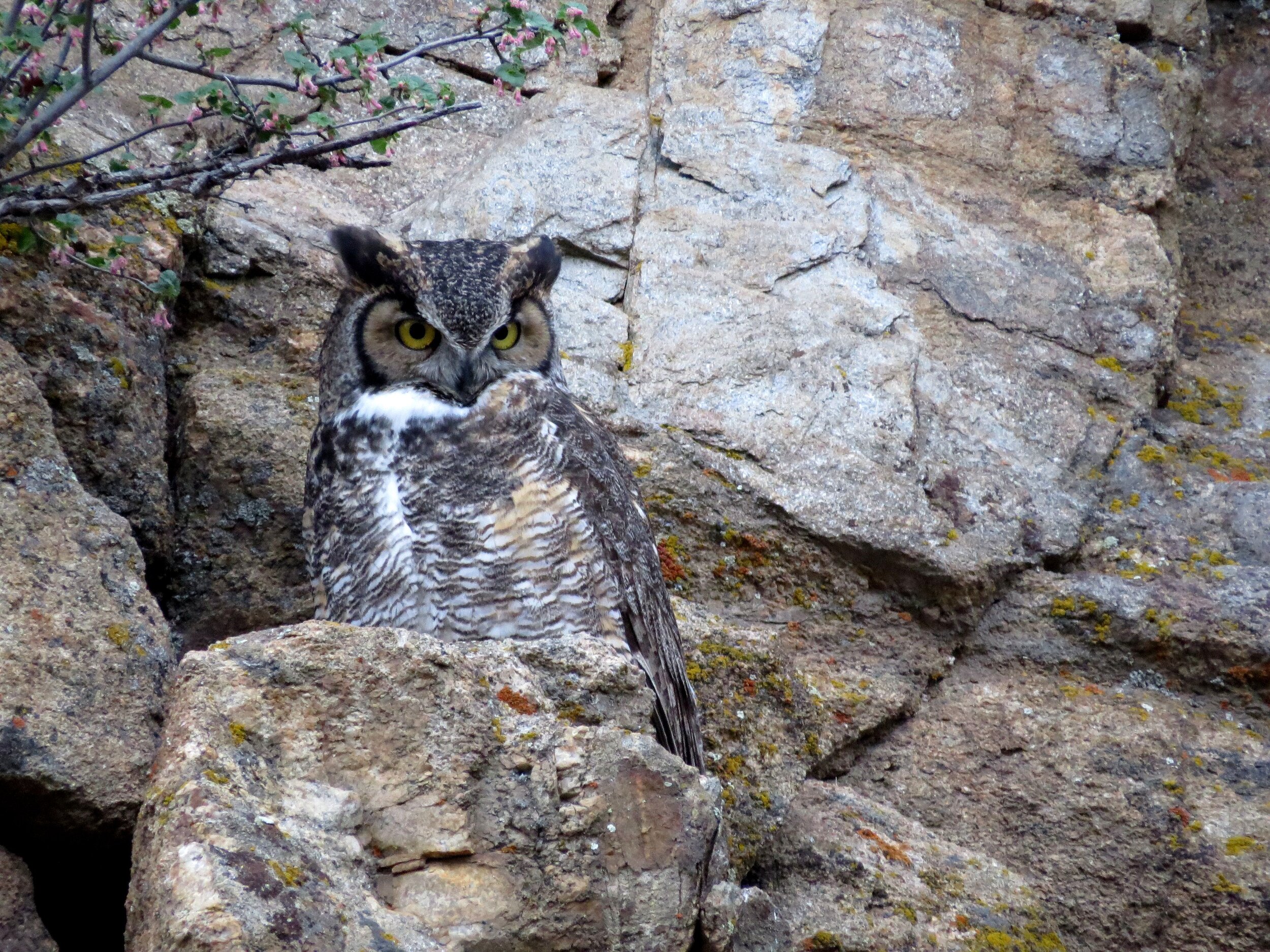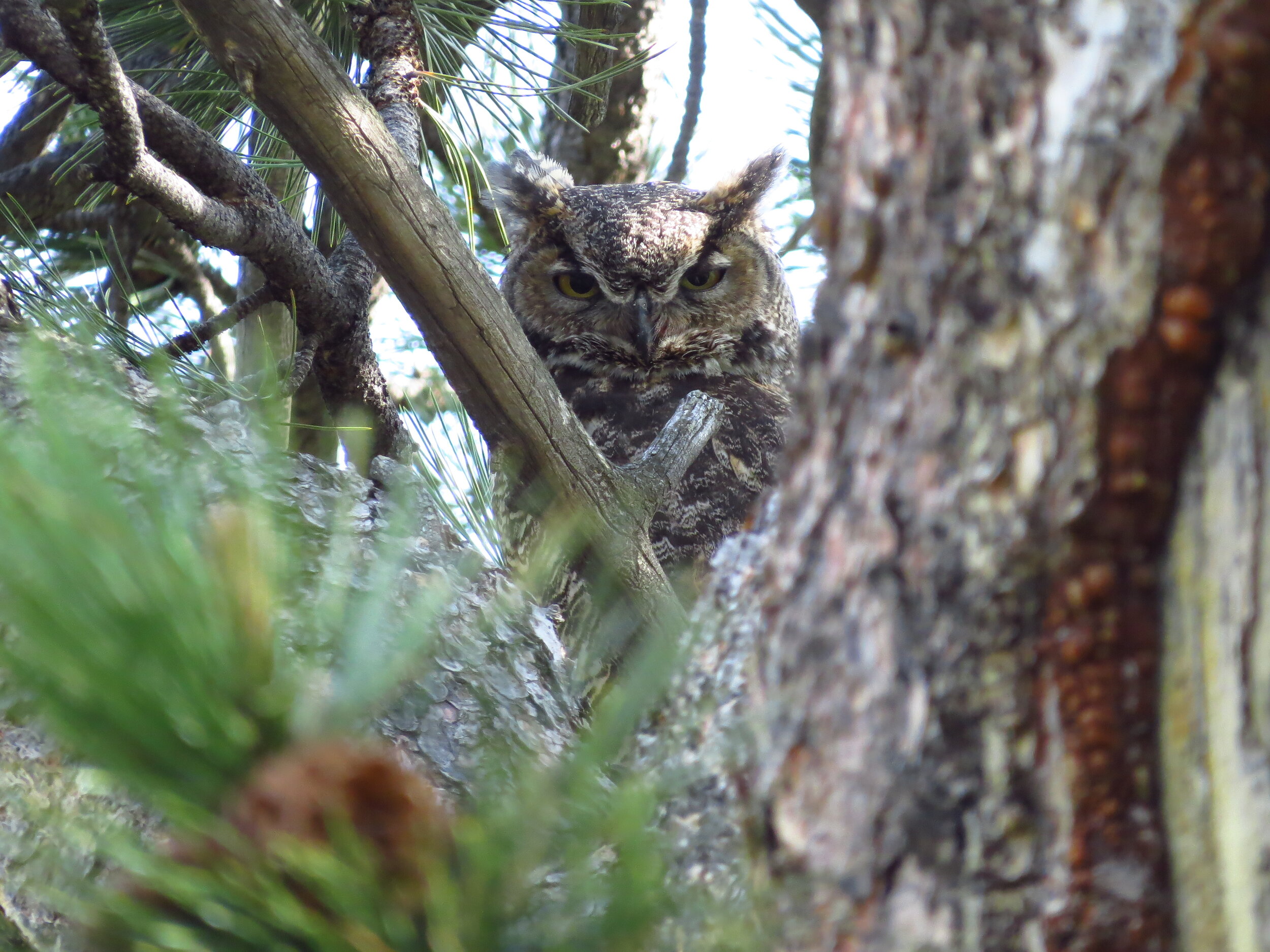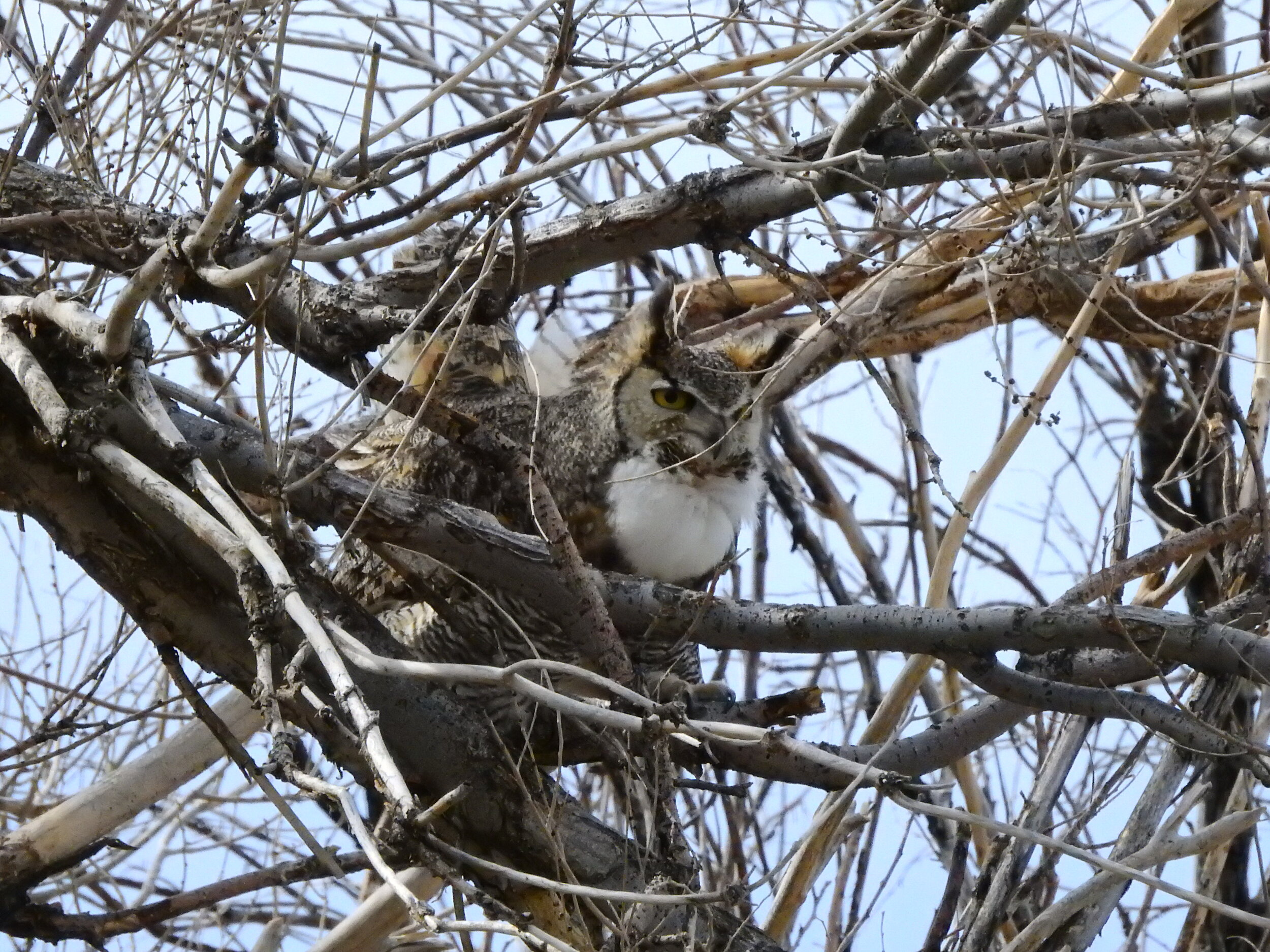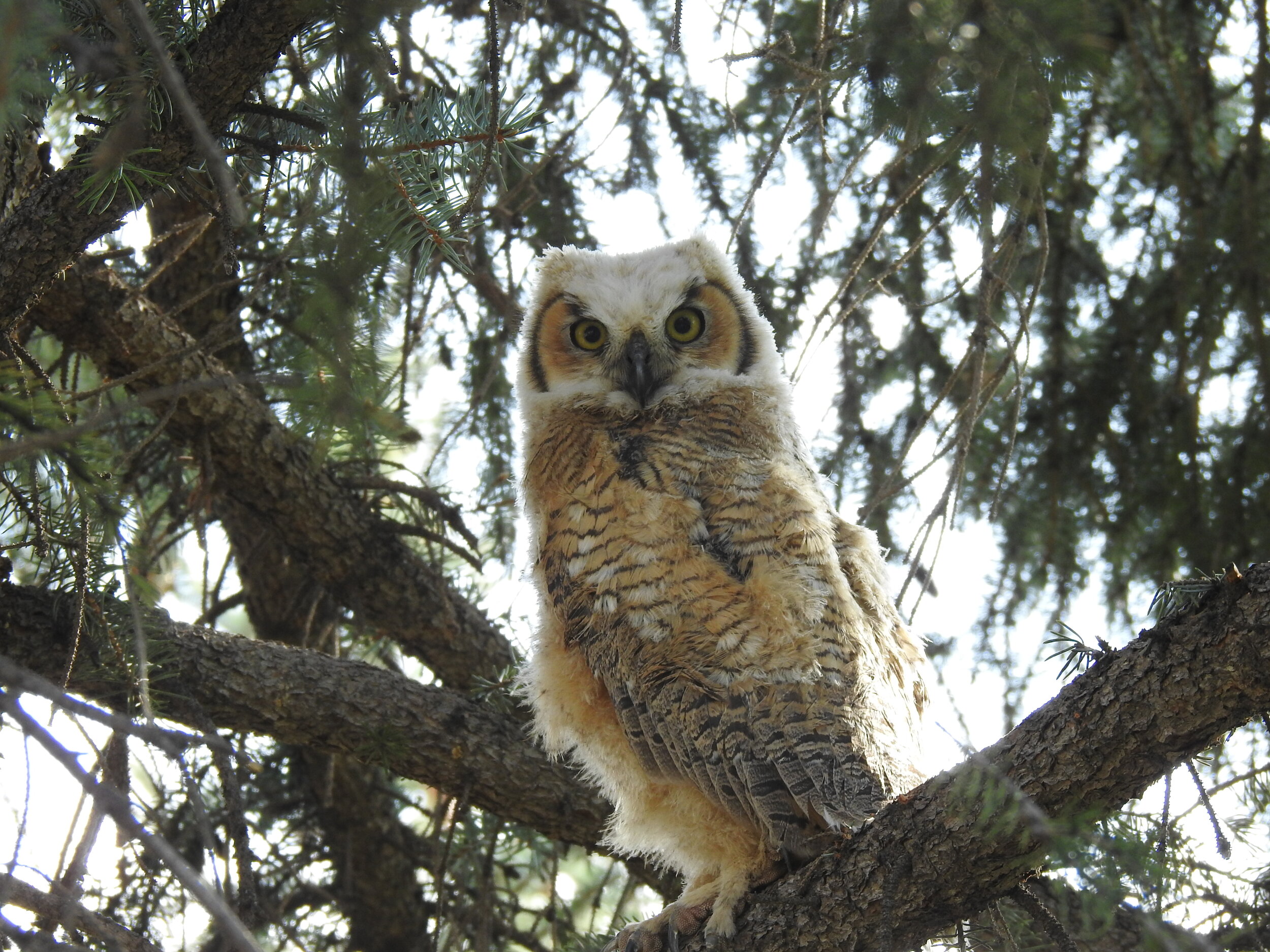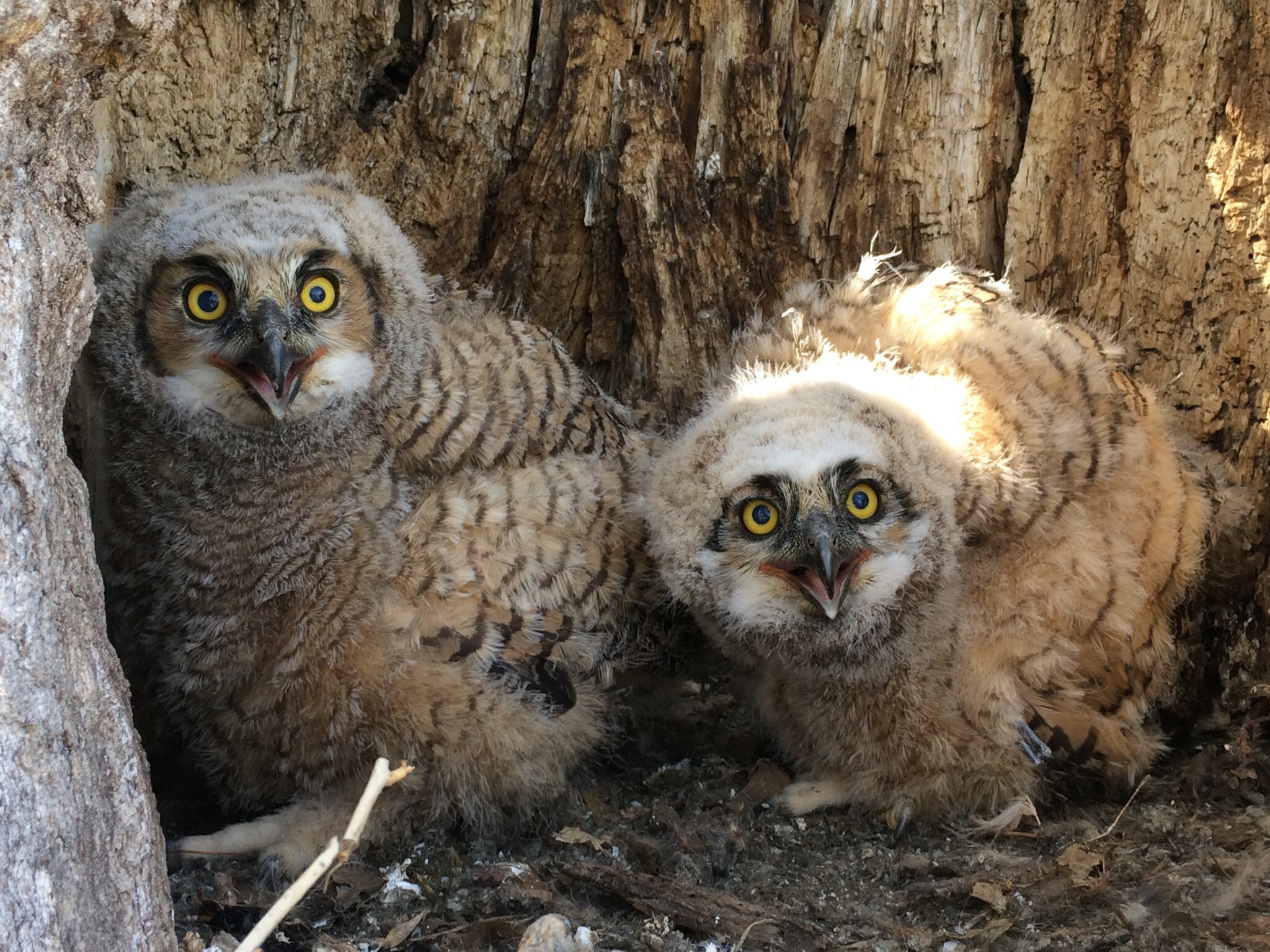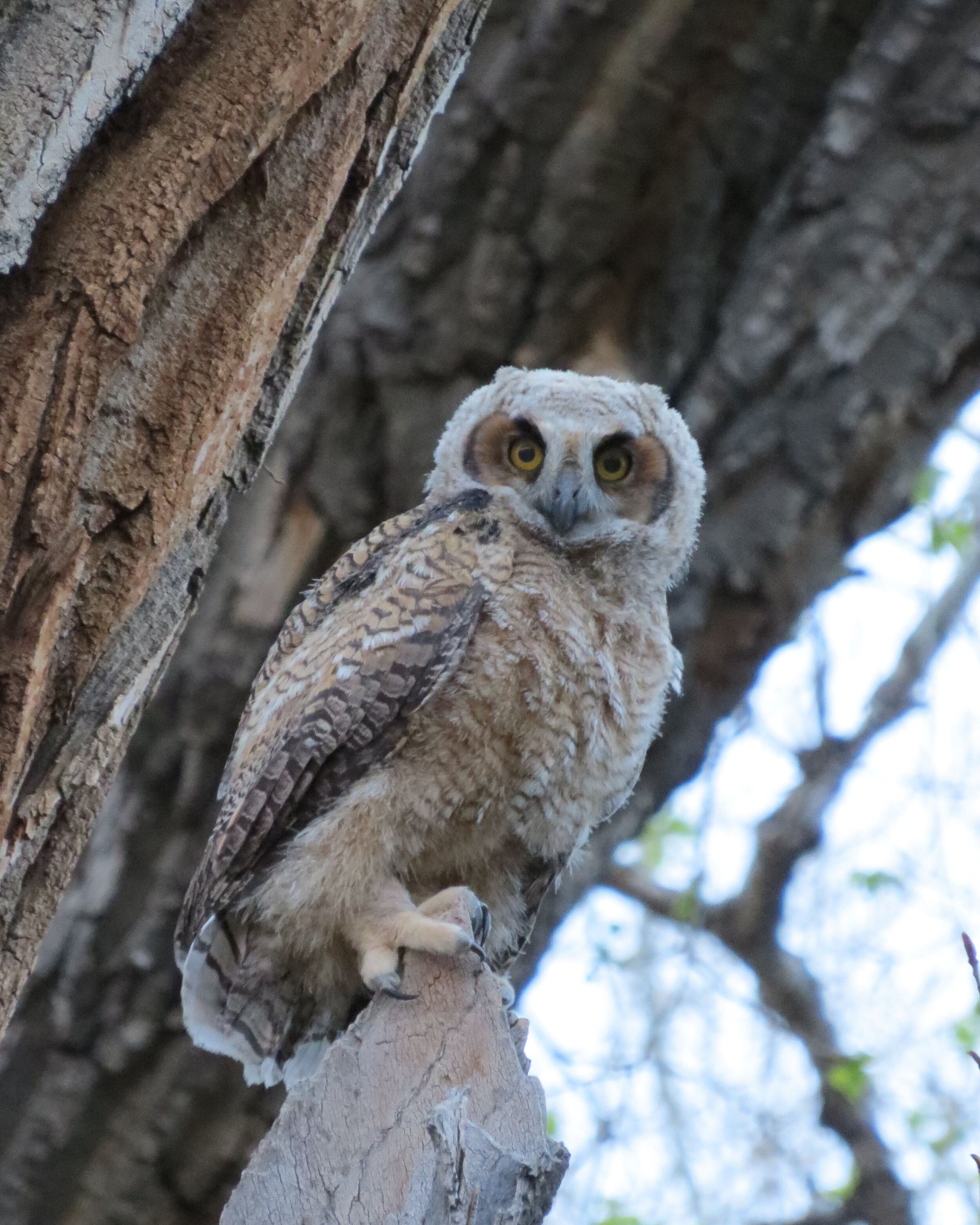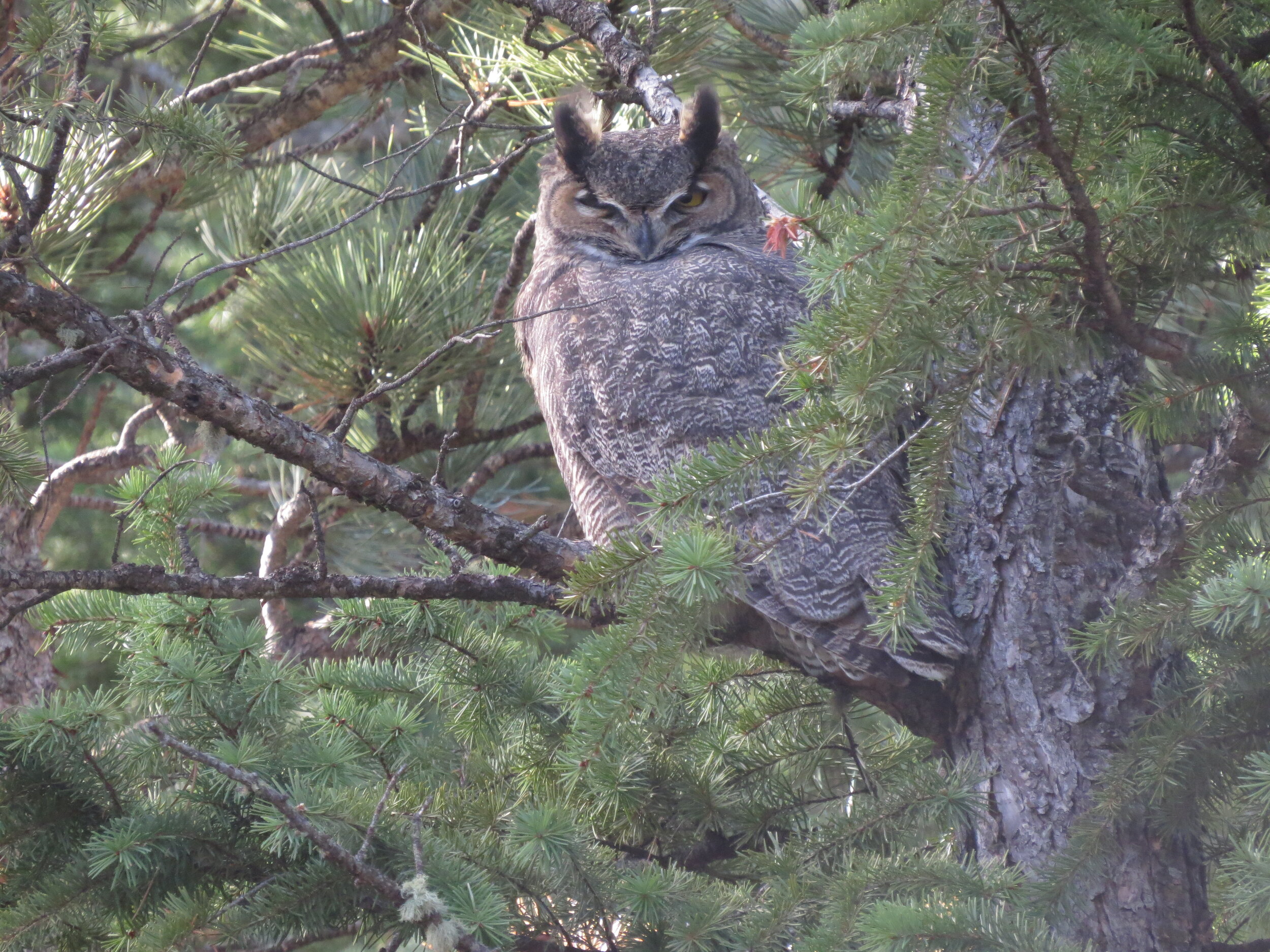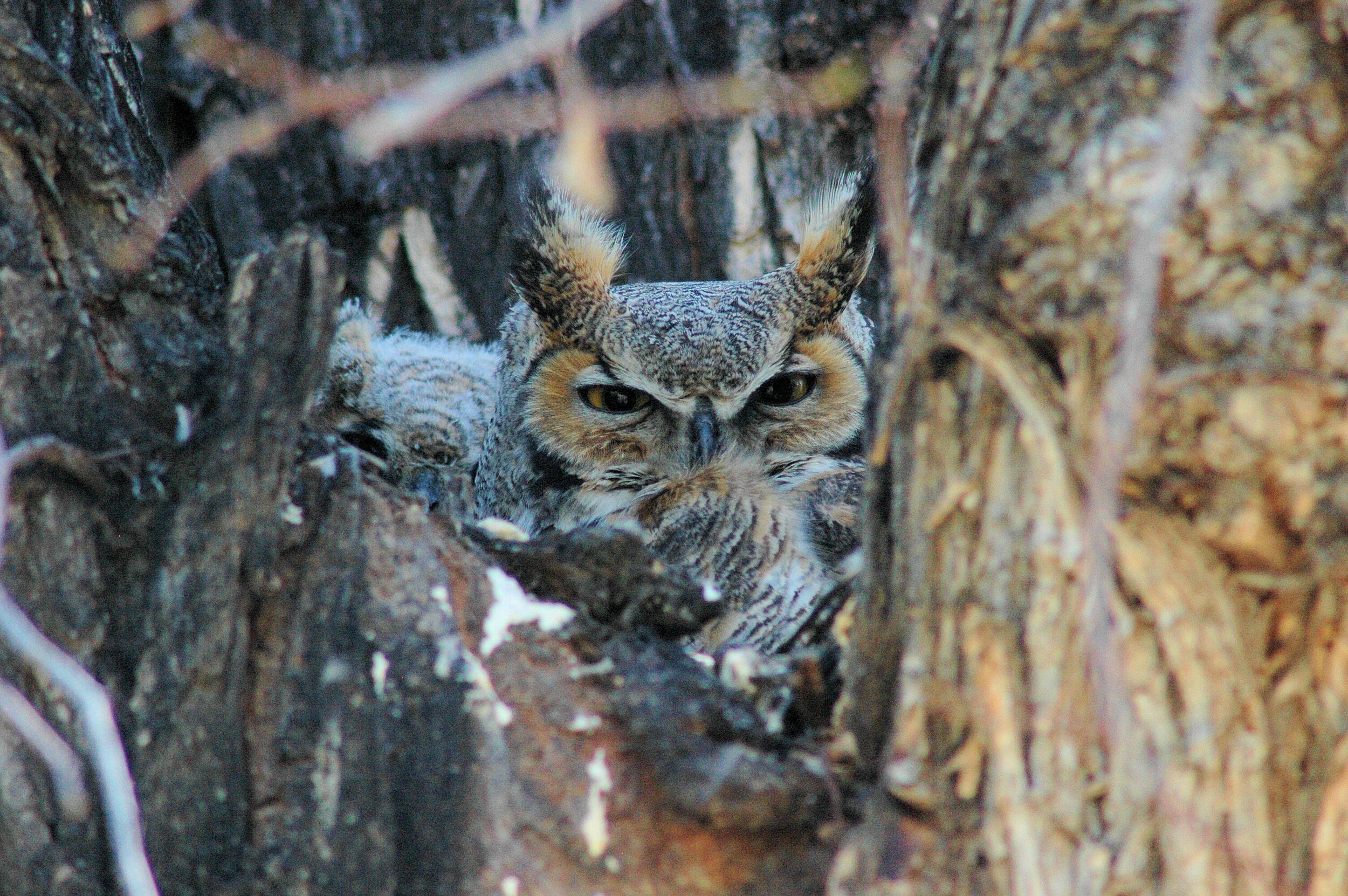The Great Horned Owl
The Great Horned Owl is the largest owl found throughout most of the U.S.
The Snowy Owl is heavier, and the Great Gray Owl is larger by measurement, but not by weight.
We monitor several Great Horned Owl nests each year, all of which are in Northern Colorado. We have live cameras on two nests. A pair of owls nested in one of those nests in 2019, but found another location in 2020.
Great Horned Owls are one of the earliest nesting species in North America. Many owls begin nesting in January and February. Owls that nest in the western mountains frequently begin nesting in March.
Great Horned Owls do not construct their nests, but rather use an unoccupied structure to raise their young. Their chosen structure could be an unused hawk, raven, crow, or squirrel nest. They also nest on cliff ledges, hollows in trees and occasionally a building or other manmade structure.
The female routinely lays two or three eggs, but have been known to lay as few as one and as many as five eggs.
Incubation takes about 35 days and often begins when the first egg is laid. The owlets remain on their nests for about four weeks before moving out to investigate their surroundings.
Great Horned Owls routinely stay on their territories year-round, as they can feed on such a wide variety of species, that they seldom have trouble finding something to eat.
Below are a few images of Great Horned Owls
Species that we have documented Great Horned Owls feeding upon include:
Animals including: rabbits and hares, rats, mice, voles, muskrats, fox squirrels, and red squirrels. Birds including: American Crow, Black-billed Magpie, Steller’s Jay, Blue Jay, Mallard, Canada Goose, Ring-necked Pheasant, Barn Owl, Flammulated Owl, American Robin, Common Grackle, Red-winged Blackbird, Eurasian Collared Dove, Rock Pigeon and Northern Flicker.


